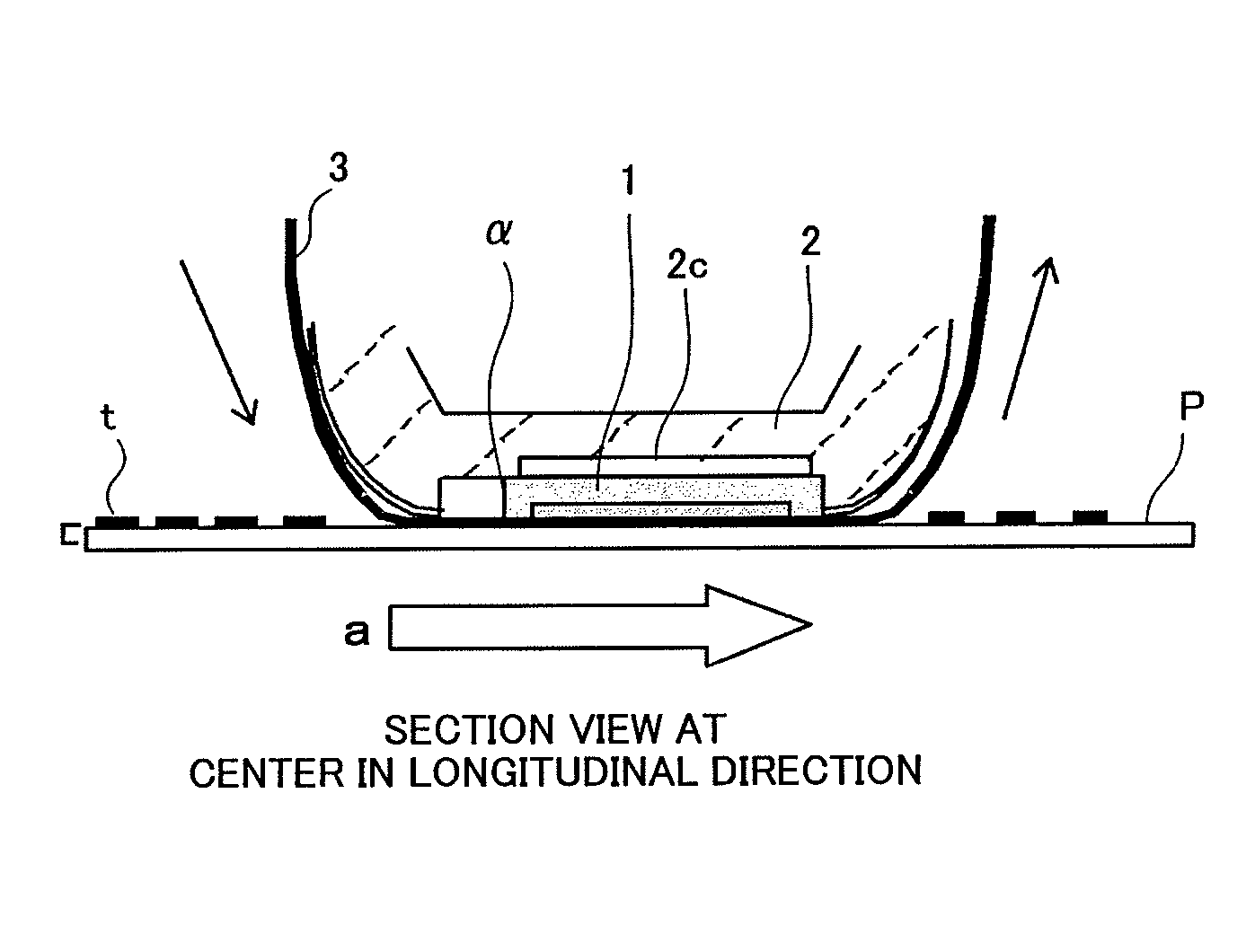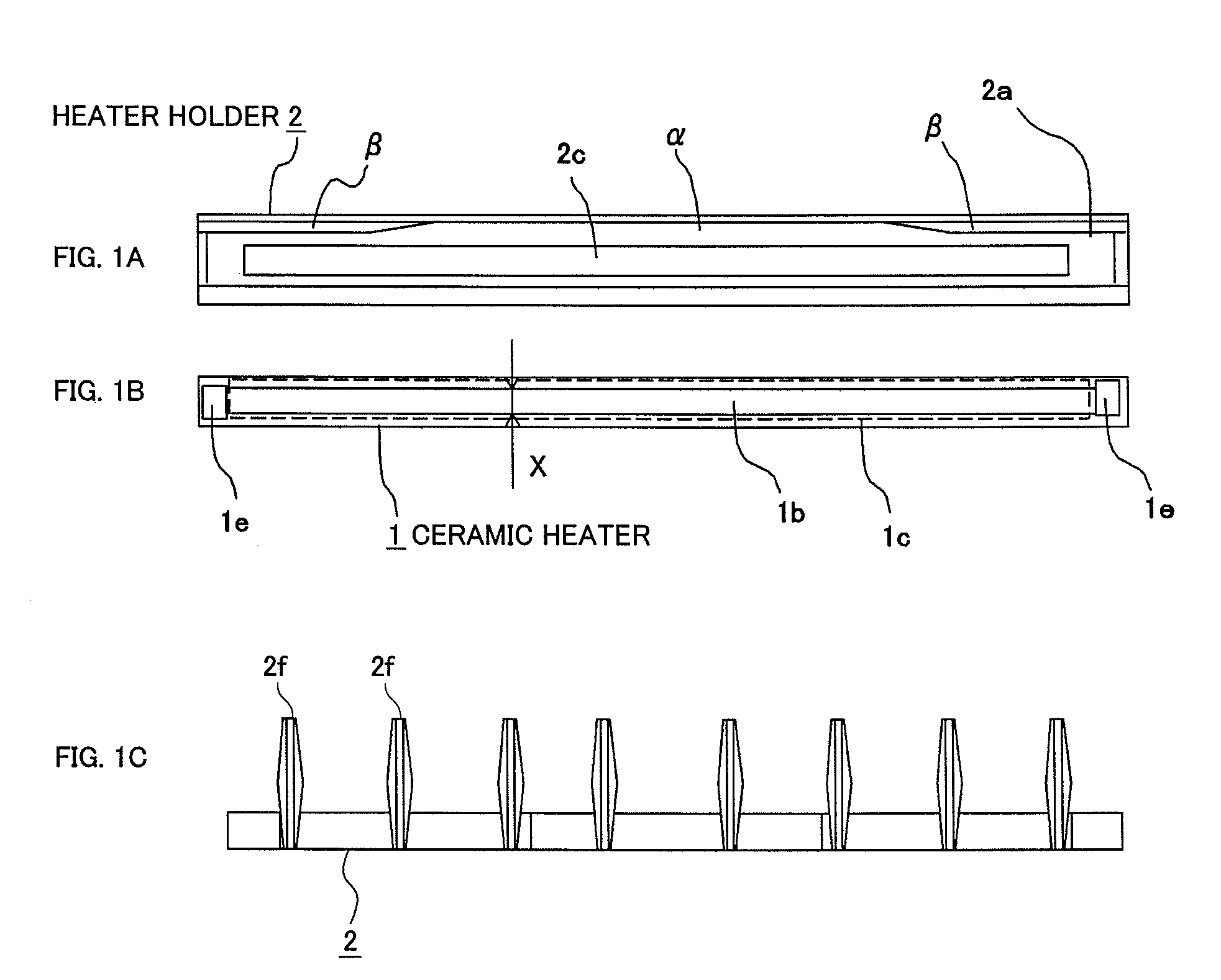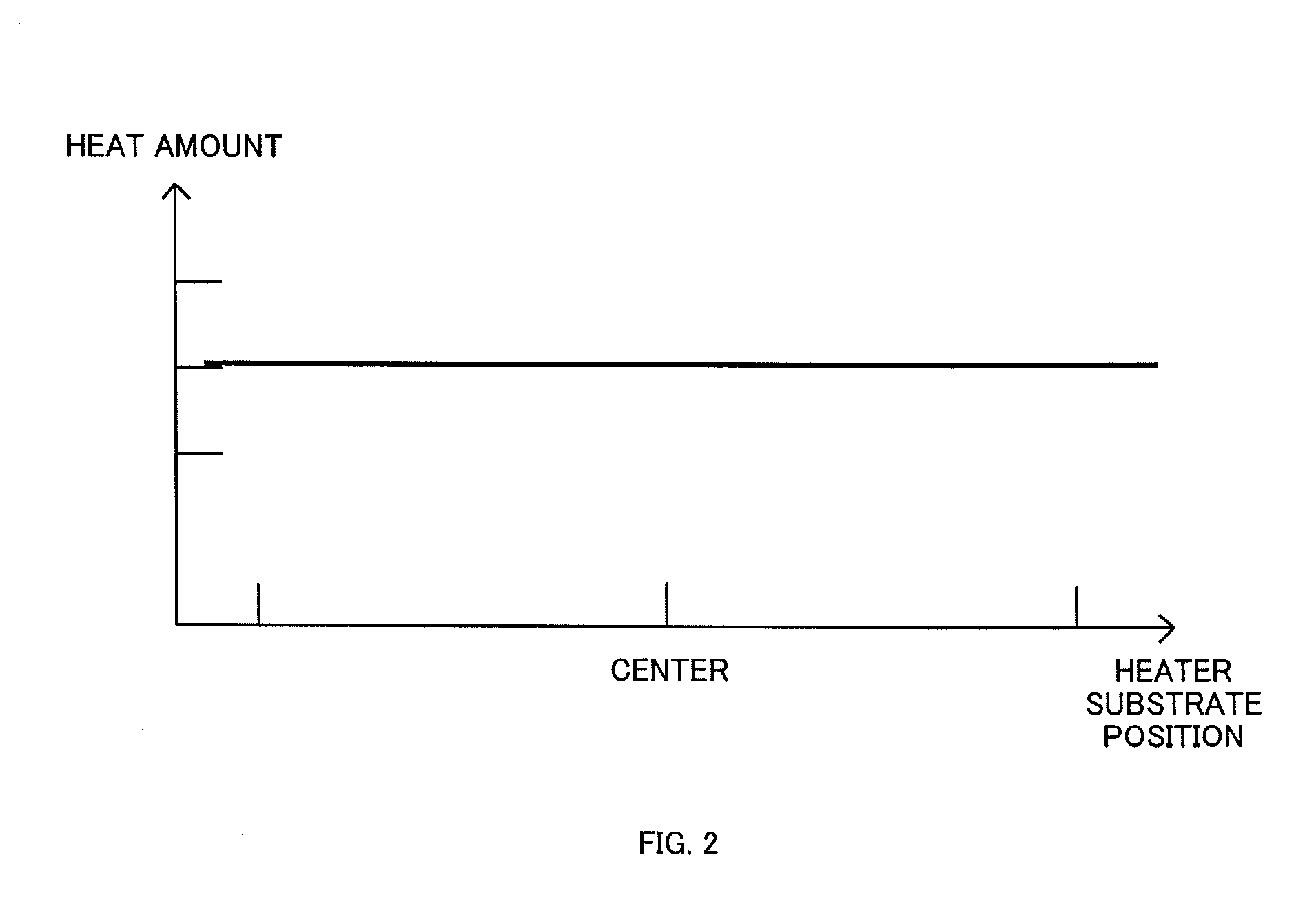Thermal fixing device and image forming device
a technology of fixing device and image forming device, which is applied in the field of heating devices, can solve the problems of long warm-up time, failure of fixing, and toner peeling,
- Summary
- Abstract
- Description
- Claims
- Application Information
AI Technical Summary
Benefits of technology
Problems solved by technology
Method used
Image
Examples
first embodiment
[0054]First, FIG. 9 shows the general configuration of a temperature controller of a heater in a heat fixing device used in an image forming device in this embodiment. This configuration is the same as that of a conventional device. That is, the output of a temperature sensing element (thermistor in this embodiment) 1d, provided on a heater 1, is A / D converted by an A / D converter 12 and the converted result is sent to a CPU 10. Based on the received information, the CPU 10 controls the phase and the waveform of the AC voltage to be supplied to the heater 1 via a triac 11 to control the conducting power supplied to the heater. This configuration is the same as that of other embodiments that will be described below.
[0055]FIG. 1B is a top view of the heater 1 in the first embodiment of the present invention that has a heating element that generates heat when conducted. FIG. 1A is a top view of a heater fitting groove of a heater holder 2. FIG. 1C is a front view of the heater holder 2....
second embodiment
[0060]Next, a second embodiment of the present invention will be described. FIGS. 10A-10C are the diagrams, corresponding to those in FIG. 1, showing the second embodiment. A heater 1 is same as the heater 1 in the first embodiment described above and therefore its description is omitted. Although 1.0 mm thick in this embodiment, the heater substrate is not limited to this thickness.
[0061]In the first embodiment, the contact rate between the heater holder 2 and the heater 1 is changed. In the second embodiment, the abutment surface between a heater holder 2 and the heater 1 is uniform in shape in both the longitudinal direction and the width direction of the heater 1 as shown in FIG. 10A. That is, the contact area between the heater holder 2 and the heater 1 is uniform in the longitudinal direction. However, as shown in FIG. 10B and FIGS. 11A and 11B that are cross sections perpendicular to the longitudinal direction of the heater holder 2, the cross sectional shape of the heater ho...
third embodiment
[0063]The general configuration of the temperature controller of a heater in a heat fixing device used in an image forming device in this embodiment is the same as that in the first and second embodiments shown in FIG. 9.
[0064]FIG. 12B is a top view of a heater 1 having a heating element, which is heated through conduction, in a third embodiment of the present invention. FIG. 12A is a top view of the heater fitting groove in a heater holder 2. FIG. 12C is a front view of the heater holder 2. The structure of the other components of the heat fixing deivce is the same as that of the corresponding components of the conventional technology shown in FIGS. 6A to 6C. Although 1.0 mm thick in this embodiment, the heater substrate is not limited to this thickness.
[0065]The temperature distribution of the heater 1 is even in the longitudinal direction in the first and second embodiments, while the distribution is uneven in this embodiment. That is, the heat amount at both ends of the heater 1...
PUM
 Login to View More
Login to View More Abstract
Description
Claims
Application Information
 Login to View More
Login to View More - R&D
- Intellectual Property
- Life Sciences
- Materials
- Tech Scout
- Unparalleled Data Quality
- Higher Quality Content
- 60% Fewer Hallucinations
Browse by: Latest US Patents, China's latest patents, Technical Efficacy Thesaurus, Application Domain, Technology Topic, Popular Technical Reports.
© 2025 PatSnap. All rights reserved.Legal|Privacy policy|Modern Slavery Act Transparency Statement|Sitemap|About US| Contact US: help@patsnap.com



